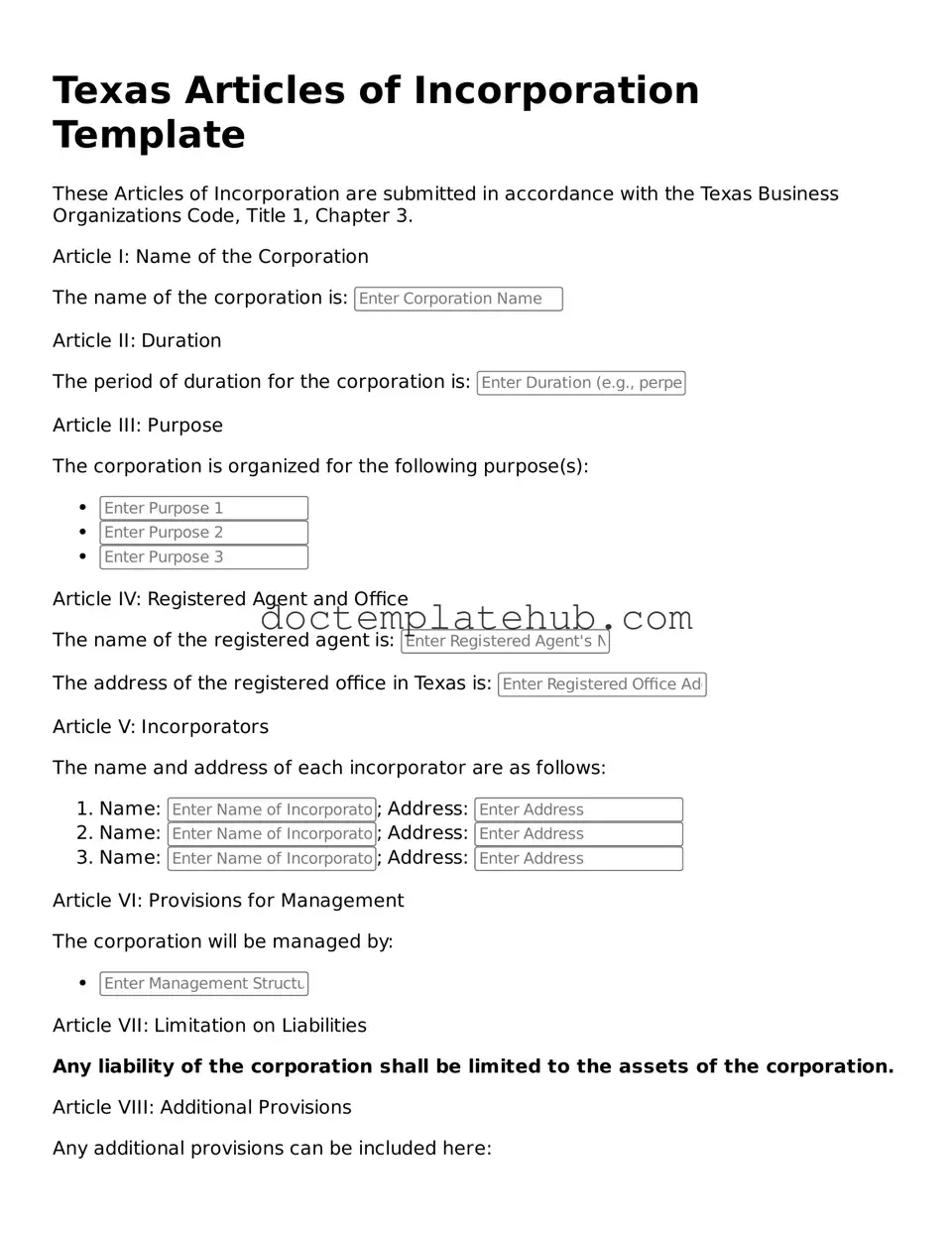What is the Texas Articles of Incorporation form?
The Texas Articles of Incorporation form is a legal document required to establish a corporation in Texas. It outlines essential details about the corporation, such as its name, purpose, registered agent, and the number of shares it is authorized to issue. Filing this form with the Texas Secretary of State is a crucial step in the incorporation process.
Who needs to file the Articles of Incorporation?
Any individual or group looking to form a corporation in Texas must file the Articles of Incorporation. This includes businesses of various types, such as for-profit corporations, nonprofit organizations, and professional corporations. It is important to ensure that all required information is accurately provided to avoid delays in the incorporation process.
What information is required on the form?
The form typically requires the corporation's name, its purpose, the duration of the corporation (if not perpetual), the registered agent's name and address, and the number of shares authorized. Additionally, the names and addresses of the initial directors may also be requested. Providing complete and accurate information is vital for the successful processing of the application.
How do I file the Articles of Incorporation?
To file the Articles of Incorporation, you can submit the completed form online through the Texas Secretary of State's website or send a paper form by mail. If filing online, you will need to create an account. Be sure to include the required filing fee, which varies depending on the type of corporation being formed.
What is the filing fee for the Articles of Incorporation?
The filing fee for the Texas Articles of Incorporation depends on the type of corporation. For a for-profit corporation, the fee is generally $300. Nonprofit corporations may have a lower fee. It is advisable to check the Texas Secretary of State's website for the most current fee schedule and any additional costs that may apply.
How long does it take to process the Articles of Incorporation?
Processing times can vary. Generally, online filings are processed faster, often within a few business days. Paper filings may take longer, sometimes up to several weeks. For urgent needs, expedited processing options may be available for an additional fee.
What happens after I file the Articles of Incorporation?
Once the Articles of Incorporation are filed and approved, the corporation is officially formed. You will receive a certificate of incorporation from the Texas Secretary of State. Following this, the corporation must adhere to ongoing compliance requirements, such as obtaining an Employer Identification Number (EIN) and filing annual reports.
Can I amend the Articles of Incorporation after filing?
Yes, amendments to the Articles of Incorporation can be made after the initial filing. This may be necessary if there are changes in the corporation's name, purpose, or structure. To amend, you must file a Certificate of Amendment with the Texas Secretary of State, which may involve a fee and specific procedural steps.
Do I need legal assistance to file the Articles of Incorporation?
While it is not mandatory to seek legal assistance, many individuals find it beneficial. An attorney can help ensure that the form is completed correctly and that all necessary information is included. This can prevent potential issues and save time in the incorporation process.
